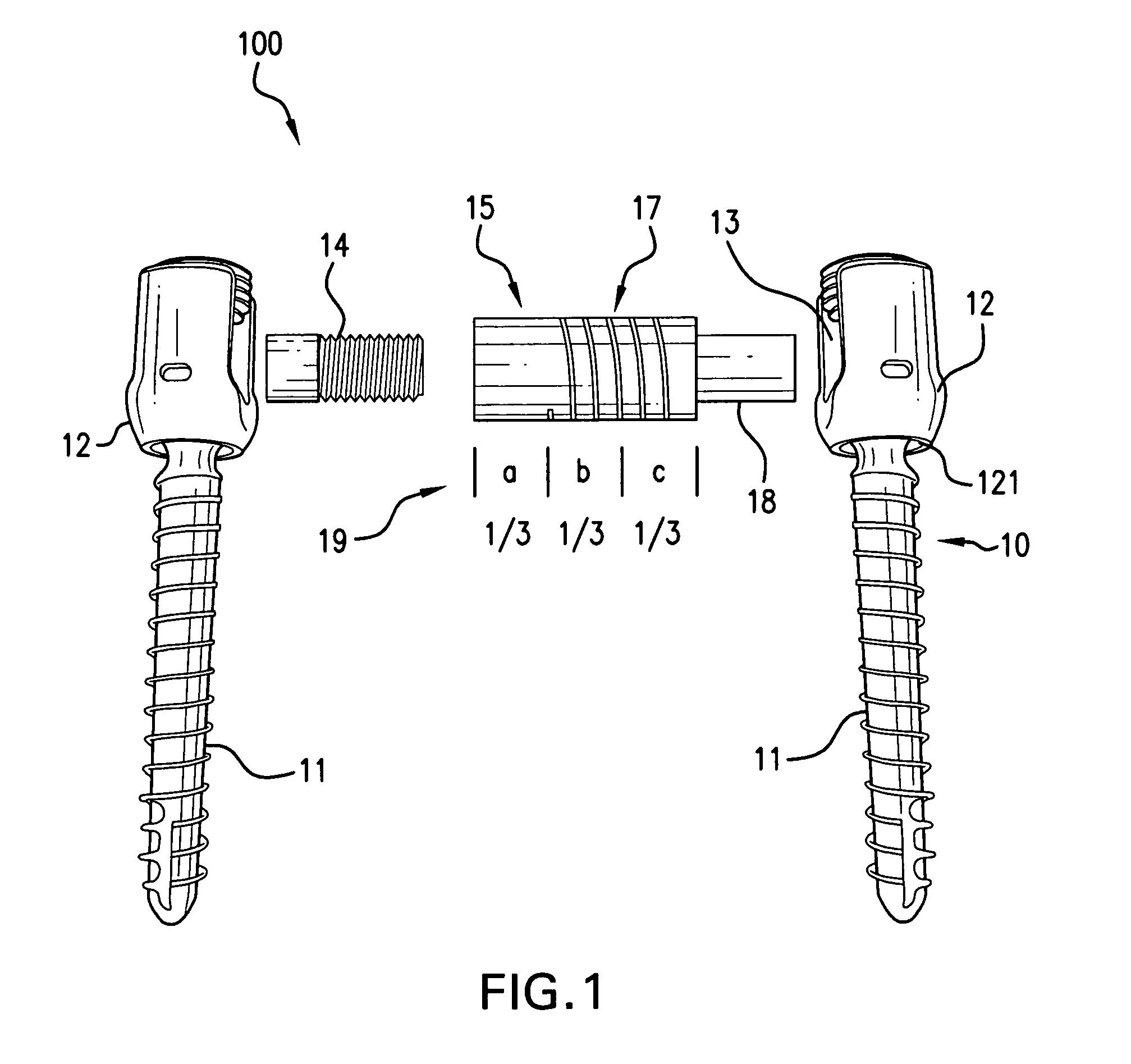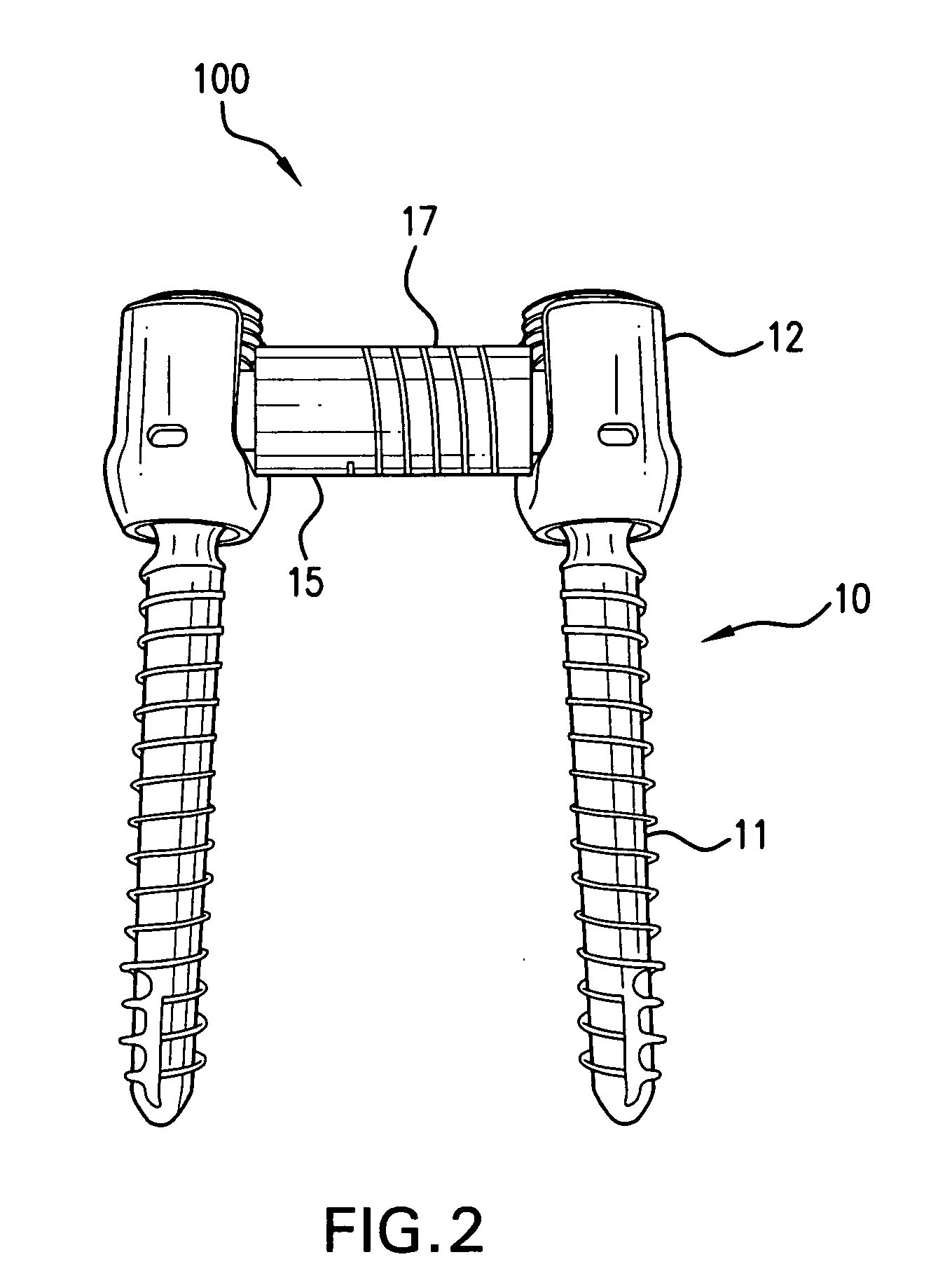Flexible spinal stabilization
a spinal stabilization and flexible technology, applied in the field of flexible spinal stabilization, can solve the problems of small bone fissures and cracks near the bone anchor interface, failure of the anchor system, and decreased performance, so as to reduce the probability of the anchor being rocked loose of the vertebrae in which it is seated, and absorb the effect of for
- Summary
- Abstract
- Description
- Claims
- Application Information
AI Technical Summary
Benefits of technology
Problems solved by technology
Method used
Image
Examples
Embodiment Construction
[0026]FIG. 1, which is an exploded view of a spinal support system as may be employed in accord with the current invention, shows two pedicle screws 10, each pedicle screw having a screw head 12 and screw threads 11. The screw head 12 is shown coupled to the screw threads 11 through a ball joint 121. FIG. 1 also shows an insert 14 and a bridging spring 16. As can be seen, the bridging spring 16 contains three portions: a solid section 15, a coiled section 17, and an insert section 18. Also shown in FIG. 1 are spring distance markers. As can be seen from these markers, approximately one-third of a larger diameter section of the spring 16 is a non-coiled or solid portion 15, while two-thirds of this larger diameter section of the spring 16 is a coiled section 17. As can also be seen in FIG. 1, the insert section 18 is roughly one-third of the overall length of the spring 16 and is also roughly equal to the combined length of the solid section 15 and the spring section 16. Insert 14 ma...
PUM
 Login to View More
Login to View More Abstract
Description
Claims
Application Information
 Login to View More
Login to View More - R&D
- Intellectual Property
- Life Sciences
- Materials
- Tech Scout
- Unparalleled Data Quality
- Higher Quality Content
- 60% Fewer Hallucinations
Browse by: Latest US Patents, China's latest patents, Technical Efficacy Thesaurus, Application Domain, Technology Topic, Popular Technical Reports.
© 2025 PatSnap. All rights reserved.Legal|Privacy policy|Modern Slavery Act Transparency Statement|Sitemap|About US| Contact US: help@patsnap.com



